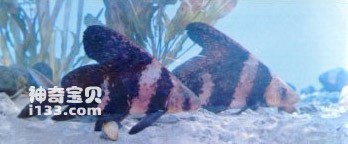Myxocyprinus asiaticus belongs to the order Cypriniformes, the family Substomidae, and the genus Myxocyprinus. Commonly known as: roasted bream, yellow steak, wood leaf plate, red fish, purple bream, bird fish, blood steak, pink steak. English name: Chinese sucker.
Endangerment level: Vulnerable. China's national level II protected wildlife.
The sides of the body are flat, and the back is particularly convex at the origin of the dorsal fin. The muzzle is blunt and round. The mouth is small, inferior, and horseshoe-shaped. The lips are thick and fleshy. The upper lip and the kiss skin form a deep groove; the lower lip turns outward to form a fleshy fold. The upper and lower lips have many small papillae. No need. The hypopharyngeal bone is sickle-shaped, and the hypopharyngeal teeth are single row, numerous, arranged in a grooming manner, and the ends are hook-shaped. The dorsal fin has no hard spines and its base is very long, extending to the back and upper part of the anal fin base. The anal fin is short, the caudal fin is slender, and the caudal fin is forked. The scales are large and the lateral line is complete. At different growth stages, body shape changes greatly. When the body length is 1.6-2.2 cm in the larval stage, the body shape is particularly slender, and the body length is 4.7 times the body height; when it grows slightly, the body height increases in the juvenile stage, and when the body length is 12-28 cm, the body length is 4.7 times the body height. 2.5 times; when the body length is 58.4-98.0 cm in the adult stage, the body length is about 3.4 times the body height. During this period, the body height growth slows down. Its body color also varies with individual size. The body length of the larval stage is 2.7-8.2 cm, dark brown in color, with three black horizontal stripes on each side of the body, the upper lobes of the dorsal and anal fins are gray-white, and the lower edges of the lower fins are gray-black. The side of the body of mature individuals is light red, yellowish brown or dark brown, with a wide longitudinal band of carmine red from the tip of the snout to the base of the tail. The dorsal fin and tail fin are both light red. The development process of mullet fish from larvae to adults, as well as these changes in external shape and body color, have been quite confusing in the literature in the past. Some scholars have established new species or described new subspecies based on specimens of different sizes, which is not safe. In fact, there is only one kind of mullet fish in my country, and the names of other species and subspecies are all synonyms of this species.

The juvenile and adult fish of mullet fish not only have different shapes, but also different ecological habits. Generally required habitat, fry and juvenile stages often like to live in groups among gravels with slow water flow. They mostly move in the upper layers of the water body and swim slowly. Semi-grown fish are accustomed to inhabiting the middle and lower reaches of lakes and rivers. The middle and lower layers move slowly. Adult fish mostly live in the upper reaches of rivers. The middle and lower layers of the water body move vigorously. Every year in mid-February (around the Rain Festival), the broodstock with nearly mature gonads will go upstream to breed in the rapids from March to May. The spawning grounds of the Yangtze River are in Jinsha River, Minjiang River, Jialing River and other places. After spawning, the broodstock fish still stay near the spawning ground until the fall when the water recedes, and then return to the deep water of the main stream to overwinter. The mullet fish usually reaches sexual maturity at the age of 6 and weighs about 10 kilograms. The mullet mainly feeds on benthic invertebrates and organic matter in underwater mud. It also eats some higher plant fragments and algae.
Most genera and species of the family Substoma are distributed in North America. There are about 14 genera and nearly 80 species in existence. This species is the only species of the substomata known so far distributed in my country. It is found in the upper, middle and lower reaches of the Yangtze River, but the number is greater in the upper reaches. It is also produced in the Minjiang River in Fujian, and is currently rare.
The mullet grows quickly. The body length of the 1-year-old fish can reach about 200 mm. The average weight of mature individuals can reach 15-20 kg, and the maximum individual weight can reach 30 kg. It is an important economic fish in the upper reaches of the Yangtze River. The number of wild individuals is currently declining year by year. After the closure of Gezhouba Dam, broodstock fish in the middle and lower reaches of the Yangtze River cannot go upstream to spawn in major tributaries such as the Tuojiang River and Minjiang River, and the environment of some spawning grounds in the Yichang section has also been damaged. Although breeding groups are still found in the Basia River section, the current downward trend in the number of naturally existing wild groups continues due to overfishing.
animal tags:
We created this article in conjunction with AI technology, then made sure it was fact-checked and edited by a Animals Top editor.